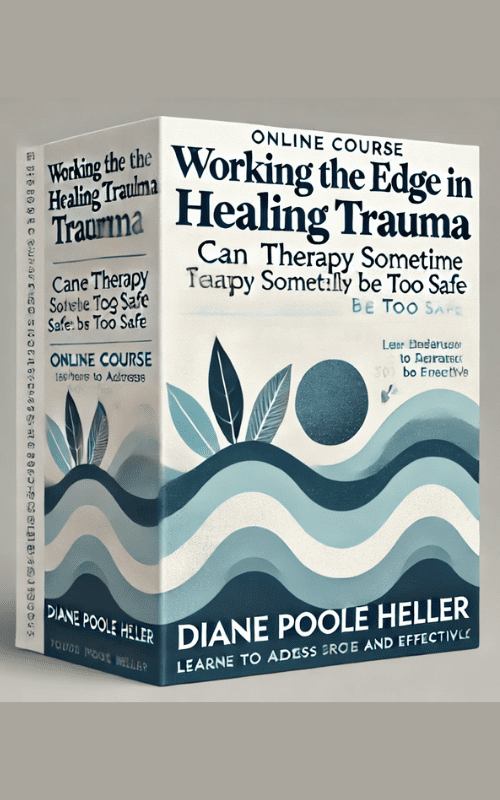Working the Edge in Healing Trauma -Can Therapy Sometimes Be Too Safe – Diane Poole Heller
Working the Edge in Healing Trauma -Can Therapy Sometimes Be Too Safe – Diane Poole Heller has the same quality as the author’s salapage.
Overview
Salepage check: Working the Edge in Healing Trauma -Can Therapy Sometimes Be Too Safe
Author: Diane Poole Heller
- Faculty:
- Diane Poole Heller
- Duration:
- 3 Hours 47 Minutes
- Format:
- Audio and Video
- Copyright:
- Mar 17, 2016
Description
While most therapists are sensitive to the hazards of retraumatizing clients by pushing them too far, too fast, what about the dangers of playing it too safe? When is too much risk avoidance a disservice to clients and an indication of the therapist’s overprotectiveness getting in the way of growth? In this workshop, we’ll look closely at how to understand clients’ threat threshold and establish an optimal pace in trauma recovery, drawing fully on their resilience and capacity for self-healing. Through video clips and demonstration, you will learn how to:
- Use resourcing and other methods to set up corrective experiences with clients learning how to handle increasing arousal and discomfort
- Recognize your own tendency to be overprotective and rescue vulnerable clients
- Invite and empower clients to face manageable challenges and find ways to test their own limits
Outline
Overview of working with disorganized attachment in trauma clients
- Identifying secure attachment
- Establishing safety and tracking in the body
Step-by-step discussion through client demonstration video
- How to directly untangle the disorganized attachment
- How to help clients “reclaim their light”
- How to use Polyvagal Theory to help our clients
Concluding remarks from Diane Poole Heller
- Final remarks on client outcomes
Faculty
Diane Poole Heller Related seminars and products: 5
Diane Poole Heller, Ph.D.: At a time when psychotherapists trained primarily in the “talking cure” are increasingly recognizing the need to “read” clients’ nonverbal communications, particularly those buried in early attachment issues, Diane Poole Heller has been a leader in addressing the unconscious issues that clients are often unable to express. With an approach grounded in Attachment Theory, Peter Levine’s Somatic Experiencing method of trauma resolution, and spiritual healing techniques, she’s traveled around the world teaching integrative mind-body methods that deepen the resonance of the therapist–client bond.
Curriculum
FAQs
Requirements
- A stable internet connection to access digital course materials.
- Basic knowledge or experience in trauma-informed therapy or psychology is recommended.
- A willingness to engage with advanced therapeutic concepts and practices.
- No special software is required; all materials are accessible via a browser.
Features
- Comprehensive insights into trauma therapy, balancing safety with effective treatment.
- In-depth analysis by Diane Poole Heller, a recognized expert in trauma healing.
- Learn how to navigate therapeutic edges to encourage client growth.
- Practical strategies for fostering safety while avoiding therapeutic stagnation.
- Online format allows flexible, self-paced learning.
- Exclusive digital-only content available at a significantly reduced cost.
Target audiences
- Therapists, psychologists, and counselors specializing in trauma recovery.
- Social workers and healthcare professionals working with trauma survivors.
- Students in psychology or mental health fields seeking to deepen their understanding of trauma therapy.
- Individuals interested in the interplay of safety and effectiveness in therapeutic practices.


